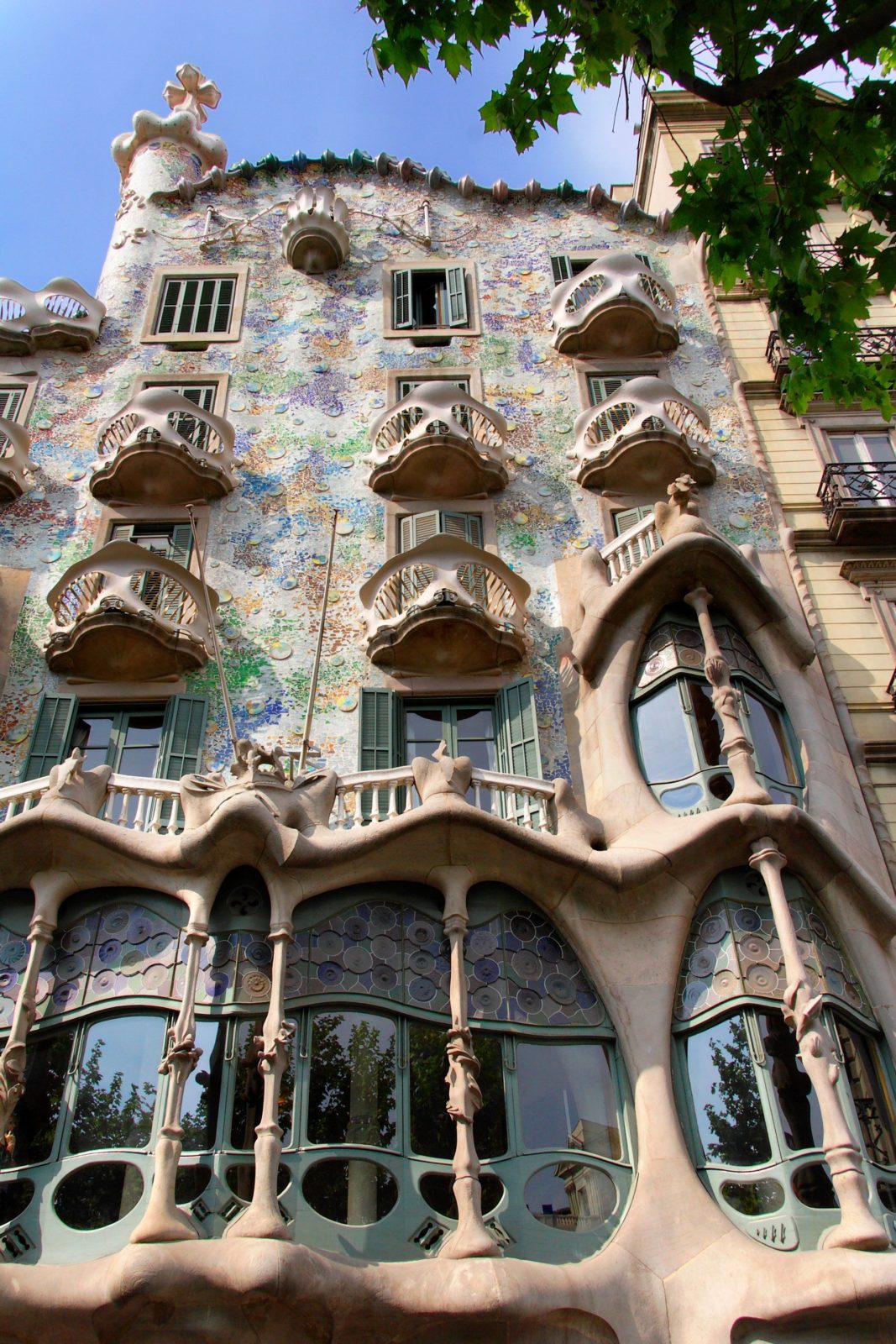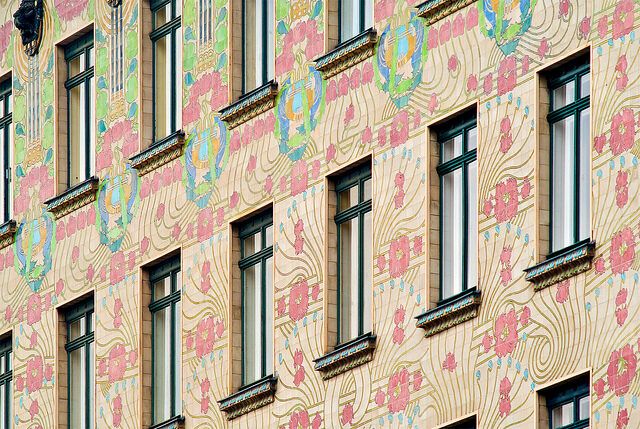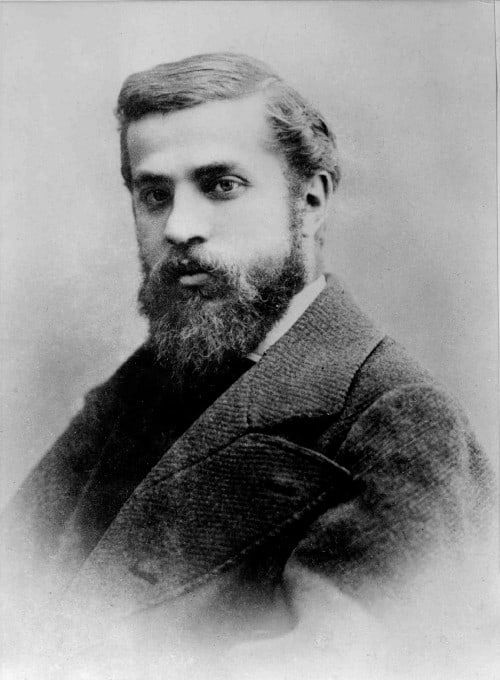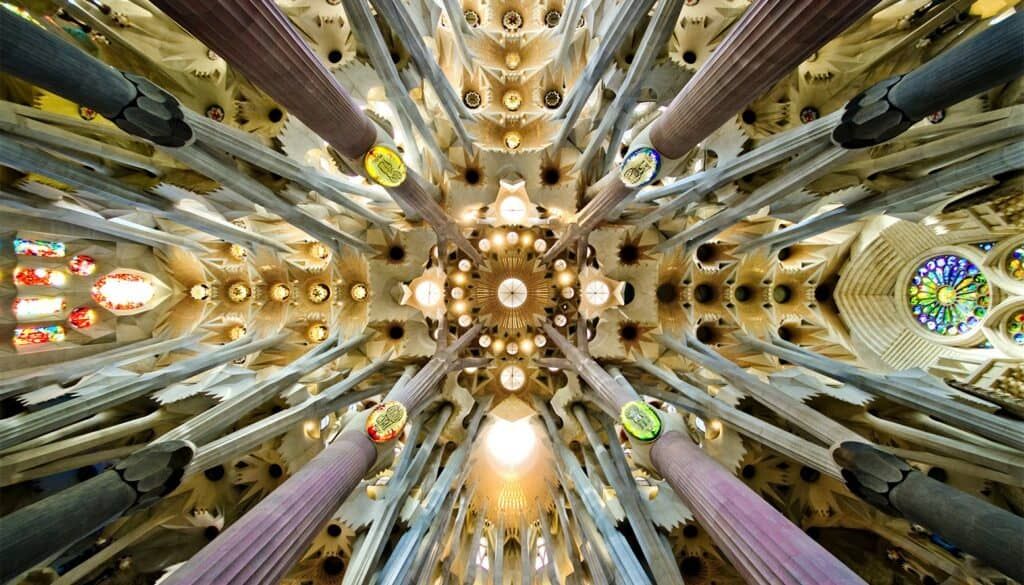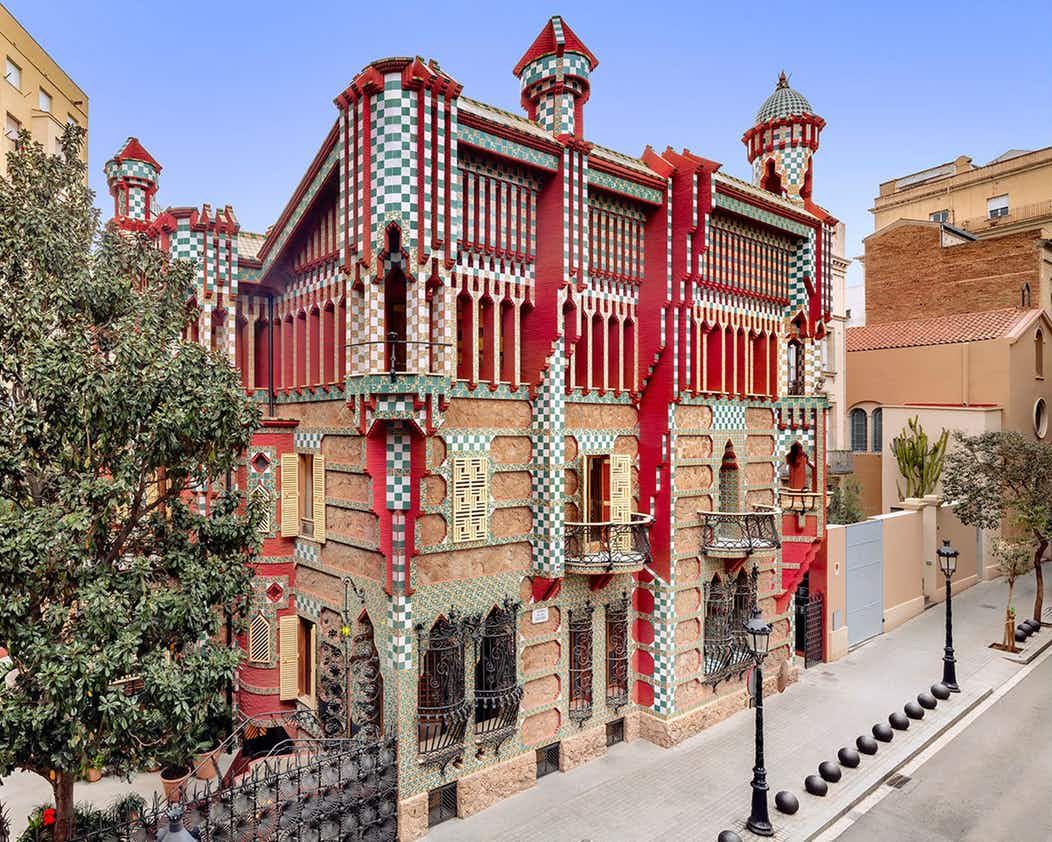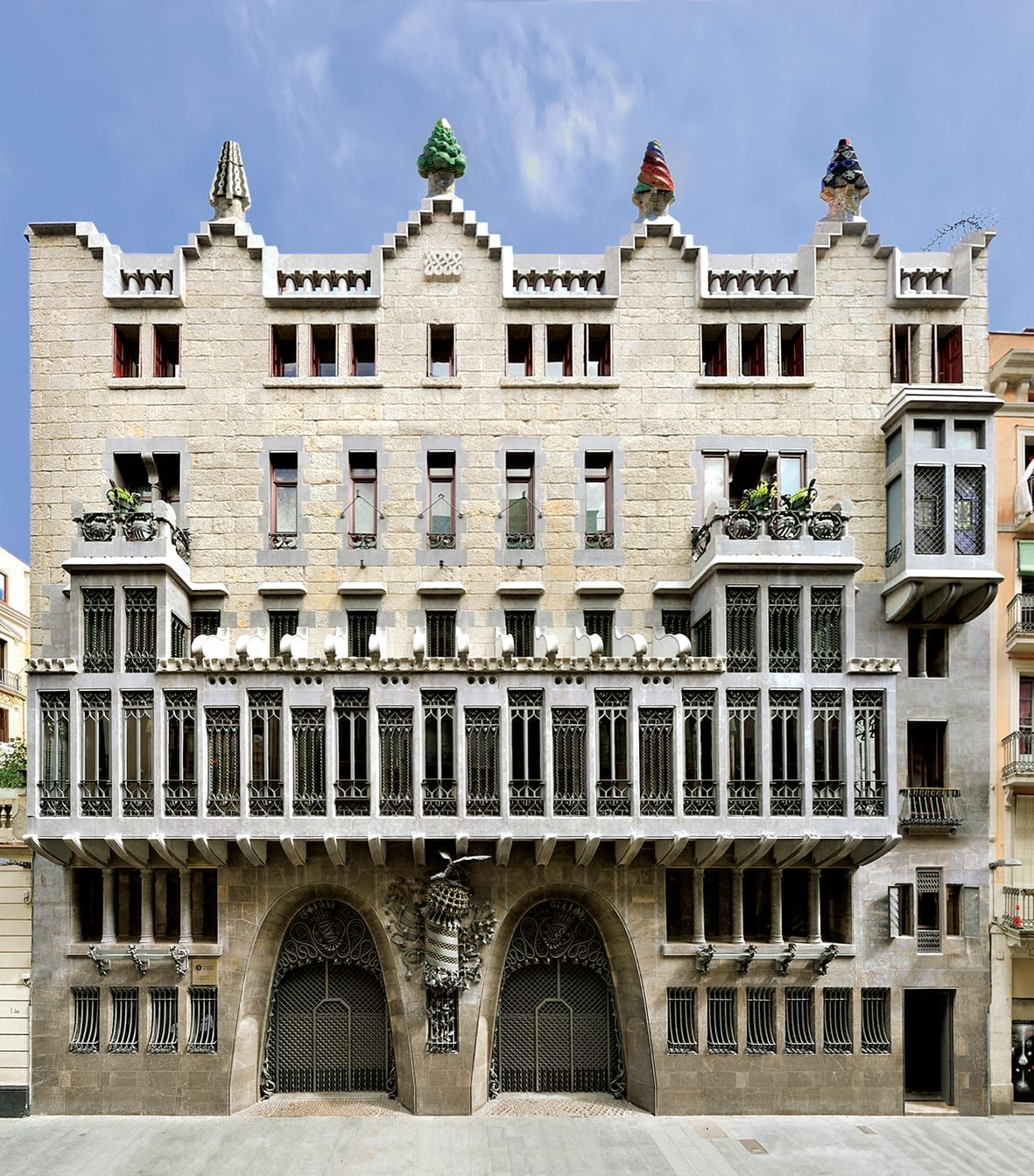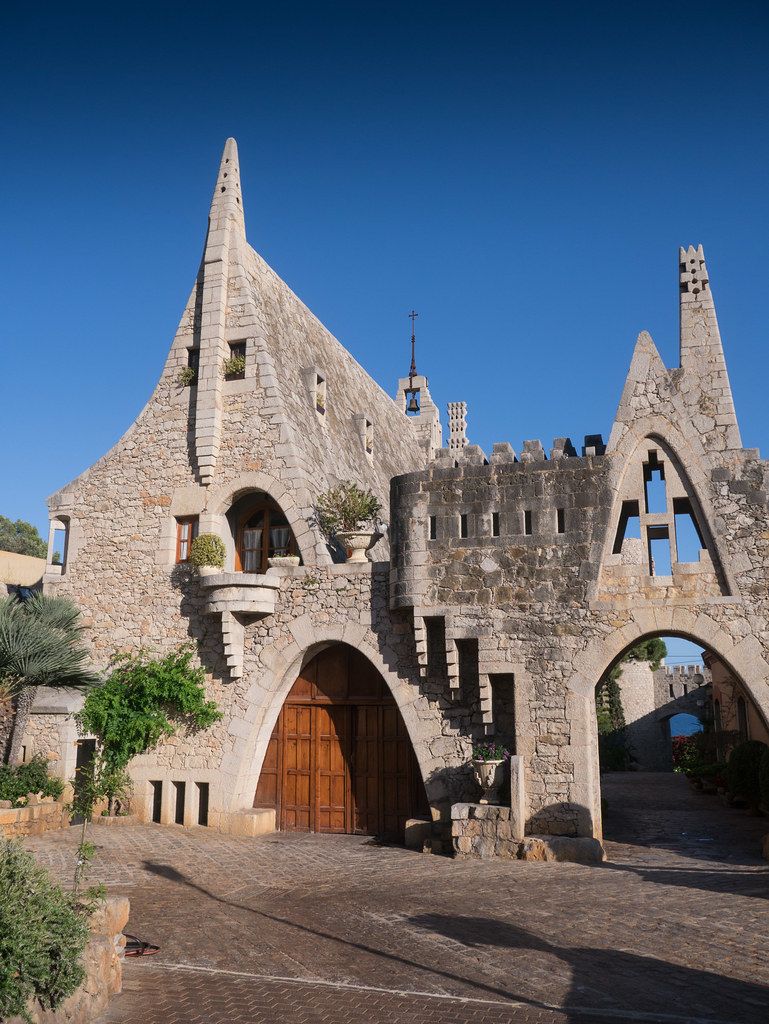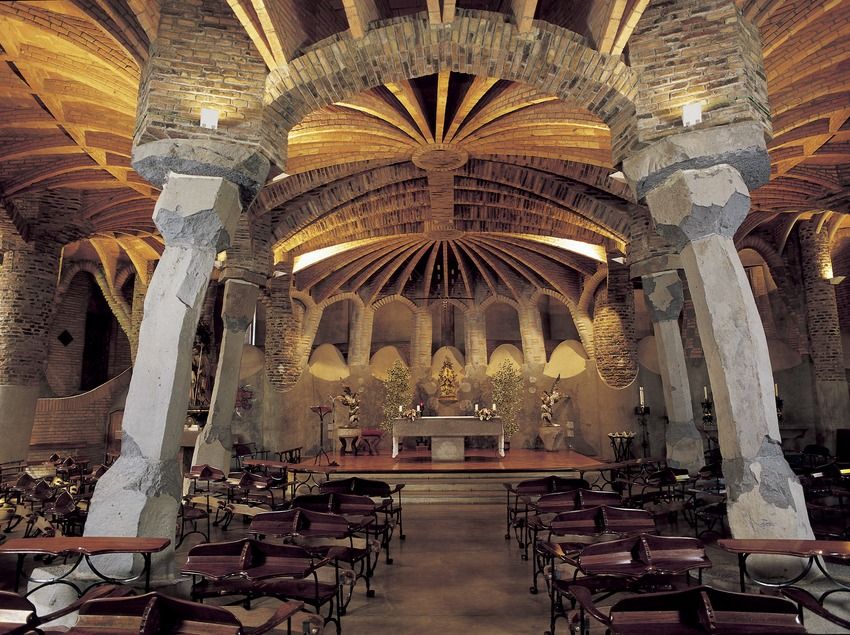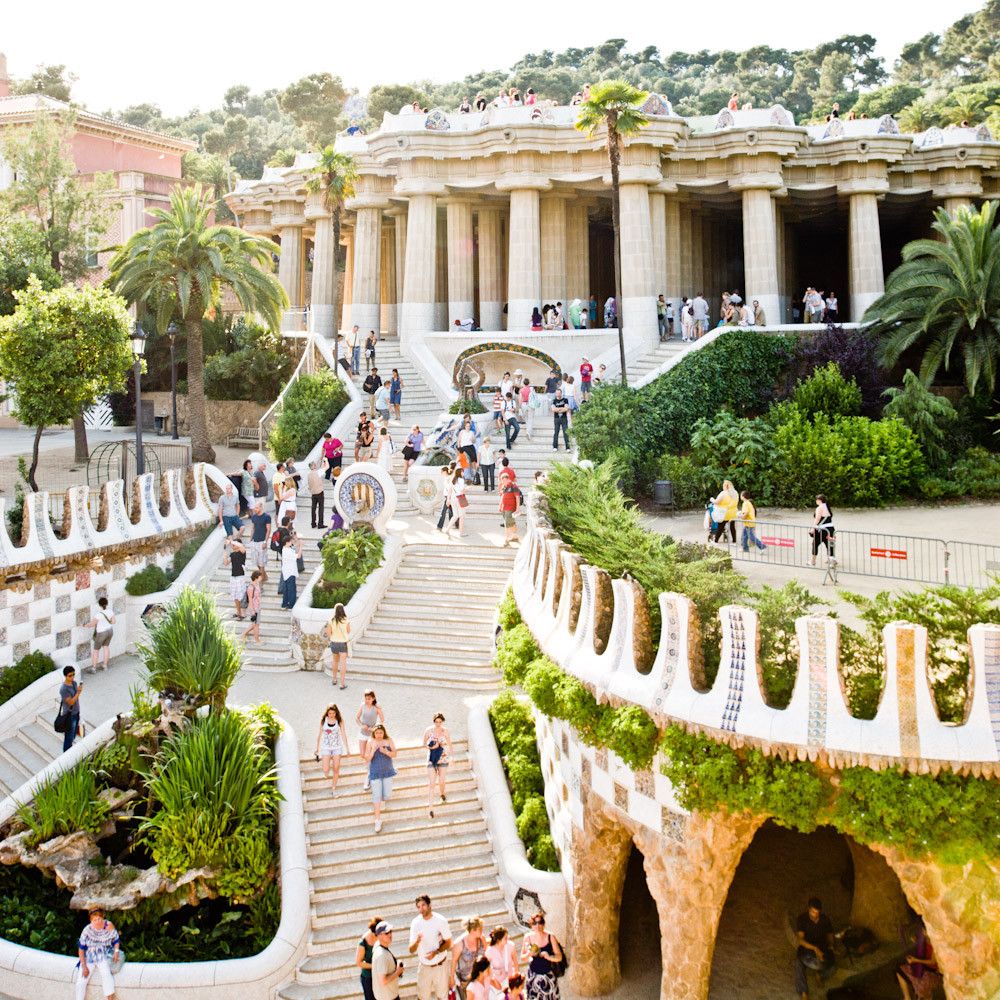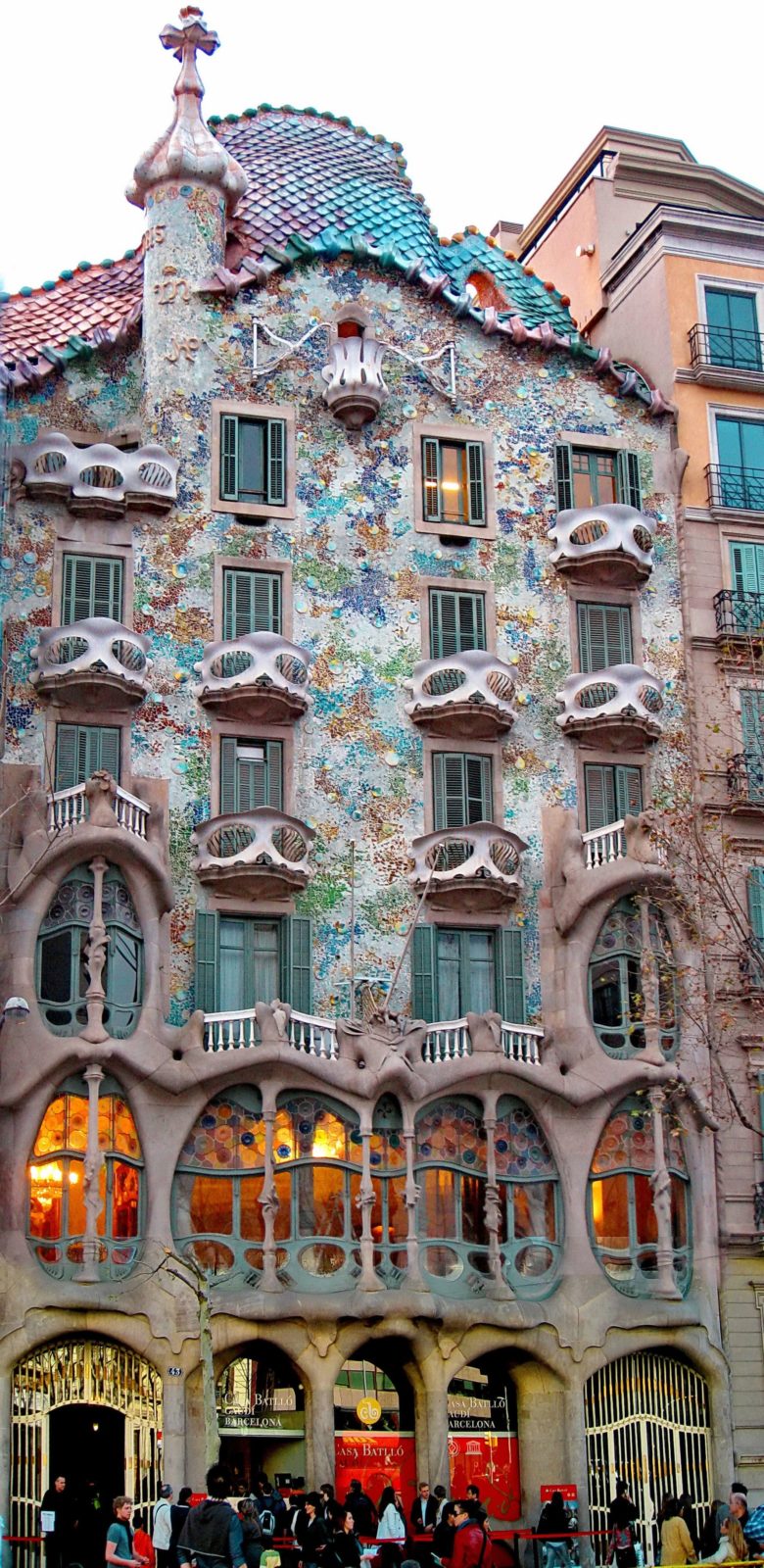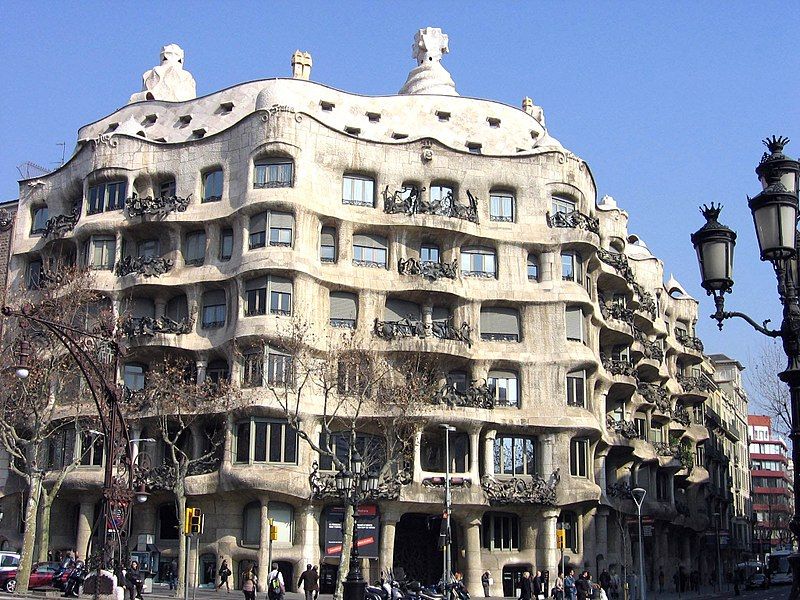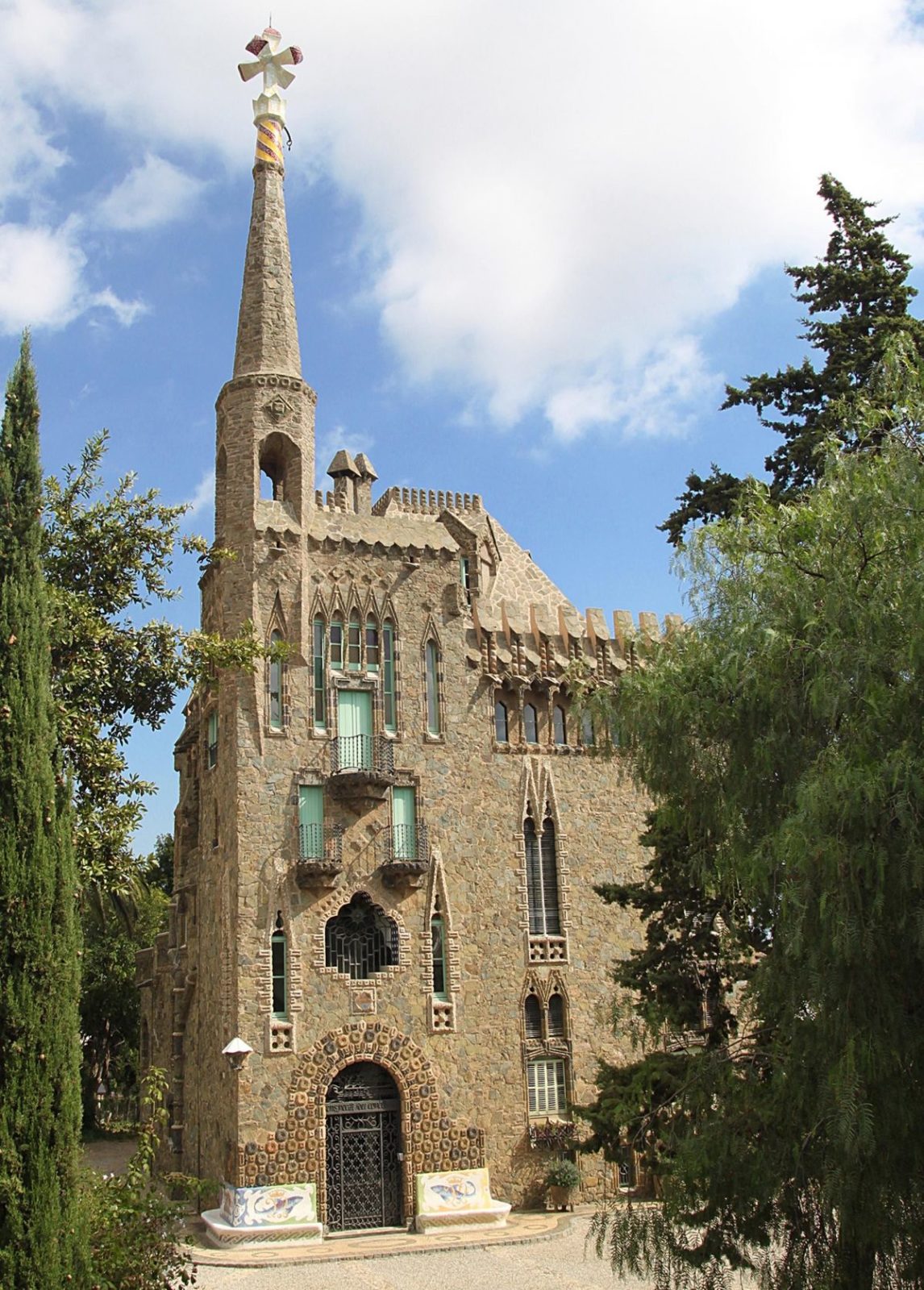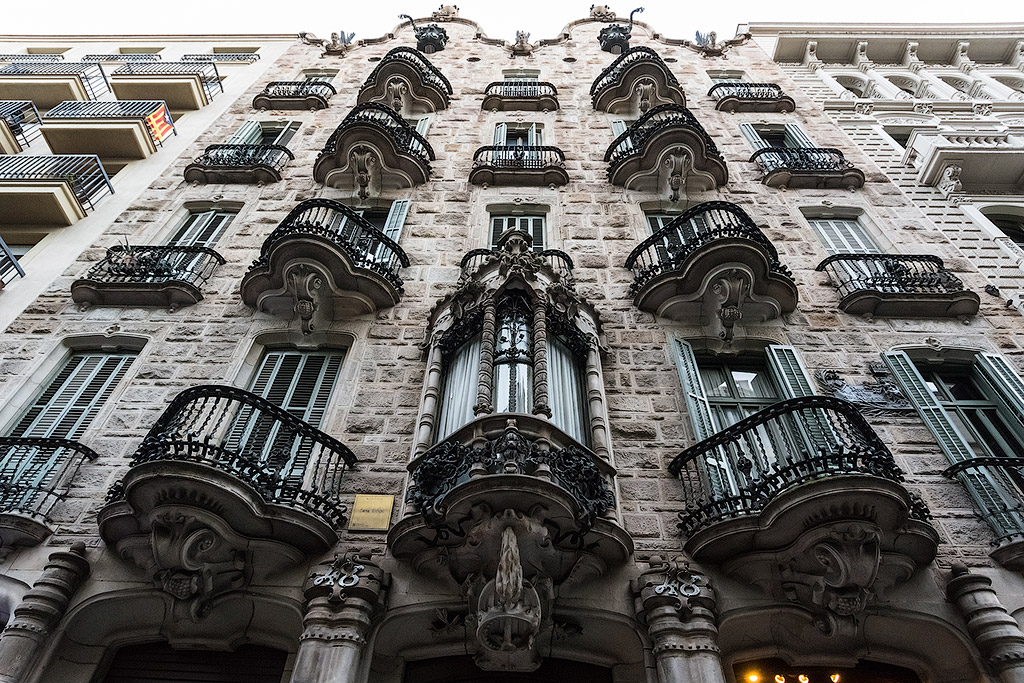Art Nouveau was a distinctive art movement and an international style that influenced all waves of art and architectural design in the late 19th century. The alluring style was inspired by the preceding art movement Arts and Crafts, which started shortly before Art Nouveau.
Art Nouveau can be found in all types of projects; posters, illustrations, jewelry, architecture, and interior design. The latter two aspects were ruled by high-profile architects of the time, including the well-known Antoni Gaudi, Otto Wagner, Victor Horta, and Jules Lavirotte.
What are the characteristics of Art Nouveau?
-
Asymmetrical shapes.
-
Extensive use of arches and curved forms.
-
Curved glass.
-
Curving, plant-like embellishments.
-
Mosaics.
-
Stained glass.
-
Japanese motifs.
Antoni Gaudi and Art Nouveau
Needless to say, Antoni Gaudi was a leading contributor to bringing Art Nouveau into his own country and creating Spain’s own interpretation of the art movement; Modernisme. The Catalan architect and pioneer of 19th-century architecture studied structure to integrate it with all types of knowledge he took an interest in; nature, religion, architecture, and modern art.
The architect is most known for the unfinished La Sagrada Familia—an architectural monument with some interesting and captivating facts behind it.
“Artists do not need monuments erected for them because their works are their monuments. Because of this, originality consists in returning to the origin.”
—said Antoni Gaudi
Here are ten of Antoni Gaudi’s most remarkable art nouveau buildings in Spain.
10 Remarkable Art Nouveau Buildings Mastered by Gaudí
-
Casa Vicens
Location: Gracia, Catalonia, Spain
Casa Vicens is the first important commission Antoni Gaudí received and sowed the seeds of all his architectural work.
The art nouveau house was the first project the architect designed and built: it is the first house, where Gaudí first applied all his baggage, with all of his sources, influences, and experiences on other projects, and his own idea of a single-family home, as a single unit and whole, where construction and ornamentation are integrated in such a way that one cannot be understood without the other.
Location: Barcelona, Catalonia, Spain
Situated in the middle of Barcelona and thronged by millions, this art nouveau church is a masterpiece from the brilliant mind of Antoni Gaudi. The Basílica I Temple Expiatori de la Sagrada Família is a Roman Catholic church, having a rich history of over 100 years. Though the church has an ever-present crowd, it also functions as a place of worship. Pope Benedict XVI consecrated the church in 2010 and Sagrada Familia’s Chapel of Holy Sacrament and Penitence is reserved for prayer.
Once completed, La Sagrada Familia will feature eighteen towers presenting a unique view of the temple from any single vantage point. Once the final 170-meter-high central spire is built, it will be the tallest church in the world, rising almost 10 meters above Ulm Minster in Germany.
-
Palau Güell (Güell Palace)
Location: Barcelona, Catalonia, Spain
Palau Güell was one of the first important commissions Antoni Gaudí received at the start of his career. Eusebi Güell (industrialist, politician, and patron of the arts) wanted Gaudí to build him this peculiar urban palace as an extension of the family home on La Rambla.
The art nouveau building is noteworthy for its innovative conception of space and light. In building Palau Güell Gaudí used a variety of solutions based on very personal approaches and created exceptional expressive forms, the fruit of his imagination, using noble traditional materials (stone, wood, wrought iron, pottery, glass, etc.).
-
Bodegas Güell
Location: Garraf, Catalonia, Spain
Located in the Garraf region of Barcelona, the Bodegas Güell in Celler Güell is a beautiful art nouveau architectural complex that is comprised of a winery and several associated buildings. The history of the project is a long and interesting one. Gaudi first received the commission for this work in 1882, on the orders of his then patron, Eusebi Güell.
The winery itself features a triangular frontal profile with almost vertical accompanying roofs. There are steep sloping stone slabs that help to add depth and drama, along with a finished set of chimneys and two doors to connect the complex to the older existing building.
-
Church of Colònia Güell
Location: Barcelona, Catalonia, Spain
The construction of the art nouveau church began in 1.908. However, the ambitious project which foresaw a church with two naves, lower and upper, topped by different towers and a 40 meters high central dome would remain unfinished. In 1.914 the Güell family decided to stop financing the church and Gaudí abandoned the project.
Even though the church remained unfinished, the church is a culminating point of Gaudi’s works. This construction includes for the first time practically all of his architectural innovations.
-
Park Güell
Location: Barcelona, Catalonia, Spain
Park Güell in Barcelona was designed by Antoni Gaudí between 1900 – 1914 at the request of Eusebi Güell. At the time, the patron-architect relationship was well established following several previous commissions, such as El Capricho, the Güell Estate, and Palau Güell.
The original request was to create a housing development for families within an estate with over 17 hectares, popularly known as the Bare Mountain. This development had a series of extremely restrictive requirements such as, for example, the fact that building could only be carried out on a sixth of the estate. Furthermore, its location and height could not obstruct sunlight or prevent residents from seeing the sea views and the Barcelona esplanade.
-
Casa Batlló
Location: Barcelona, Catalonia, Spain
Mr. Josep Batlló, the original architect of the art nouveau house and one of Gaudi’s professors, granted full creative freedom to Antoni Gaudí, putting him in charge of a project that initially entailed demolishing the building. However, thanks to the courage shown by Gaudí, the demolition of the house was ruled out, and it was fully reformed between 1904 and 1906.
Gaudi completely changed the façade, redistributing the internal partitioning, expanding the patio of lights, and converting the inside into a true work of art. Besides its artistic value, the building is also extremely functional, much more characteristic of modern times than of the past. Some even see elements that herald the architectural trends of the late 20th Century.
-
Casa Mila (La Pedrera)
Location: Barcelona, Catalonia, Spain
Casa Mila (La Pedrera) is regarded as Antoni Gaudi’s most iconic art nouveau work of civic architecture due its constructional and functional innovations, as well as its ornamental and decorative solutions, which broke with the architectural styles of his day.
For Gaudi, La Pedrera represented the most advanced approach to a building on a chamfered street corner in the Eixample in Barcelona. It consists of two blocks of apartments, each with its own entrance, structured around two large interconnected courtyards with ramps down to the garage for vehicles.
-
Bellesguard (Casa Figueres)
Location: Barcelona, Catalonia, Spain
The Bellesguard house was built by Antoni Gaudí between 1900 and 1909, using rectilinear forms rarely seen in his other work. His inspiration was the medieval castle of Martin I, also known as Martin the Humane, the last king of the Catalan dynasty of the House of Barcelona, who resided at Bellesguard until his death in 1410. Gaudí built a castle that was a blend of Art Nouveau and Gothic style and restored the ruins of the medieval palace, which are now part of the estate’s grounds.
-
Casa Calvet
Location: Barcelona, Catalonia, Spain
At the end of the 19th century, the right-hand side of the Eixample district was turning into a flourishing neighbourhood inhabited to a great extent by prosperous textile manufacturers. One of them, Pere Màrtir Calvet, commissioned Antoni Gaudí to build a traditional rental apartment building where he could install his business in the basement and on the ground floor, and use the principal or main floor as his family residence.
Although it may appear to be one of Gaudí’s most conservative and least daring art nouveau projects, many ornamental details and the layout of spaces, like the lightwell, bear the seal of the great architect. Indeed, in 1900 the building was awarded the prize for the Best Artistic Building of the Year by Barcelona City Council.


